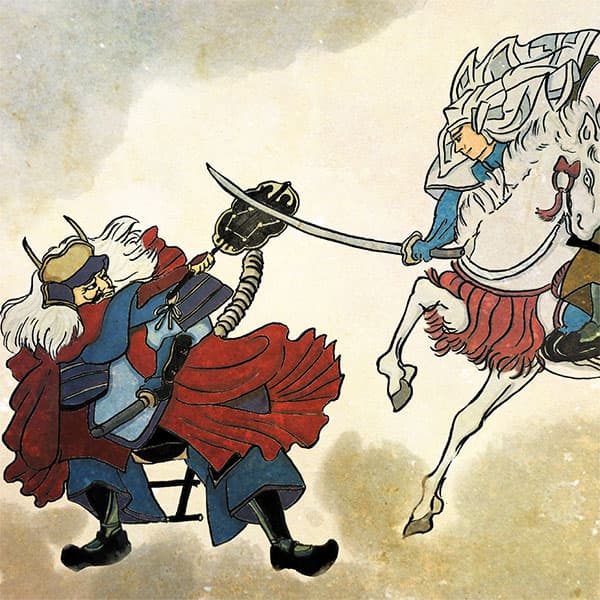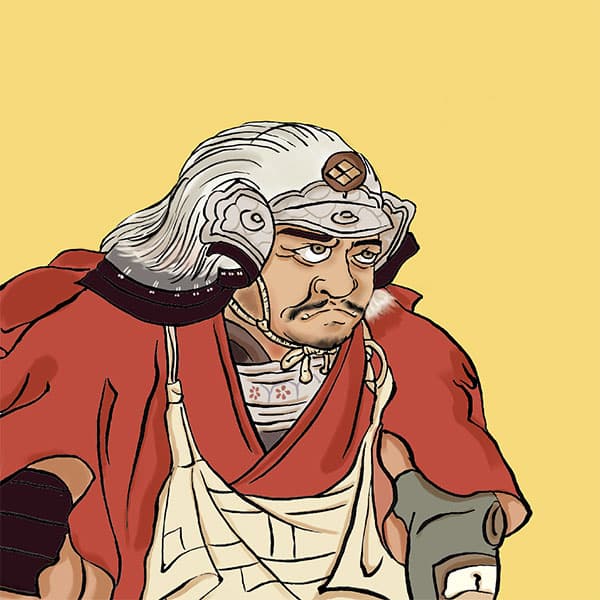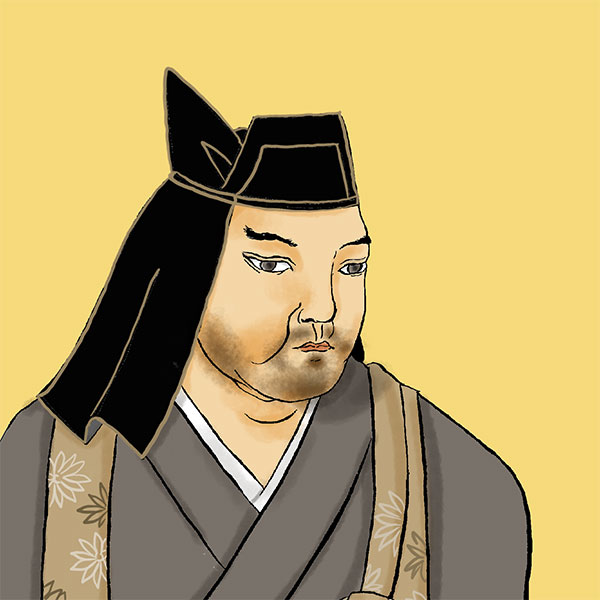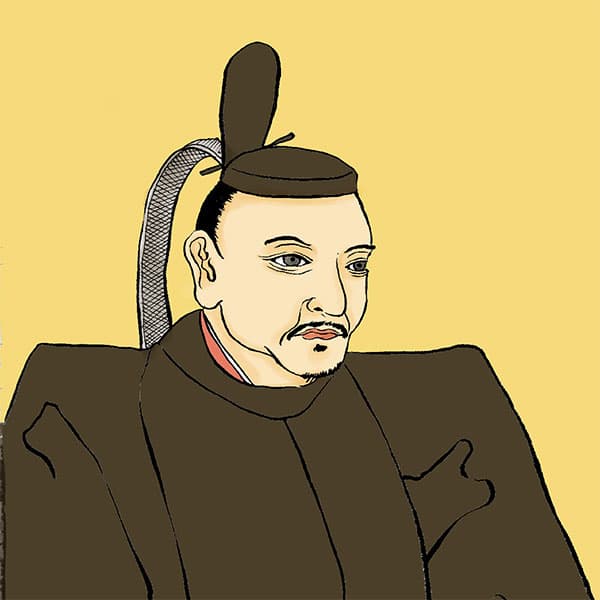Battle of Kawanakajima (1/2)Destined rivals, Takeda Shingen and Uesugi Kenshin

Battle of Kawanakajima
- Article category
- case file
- Incident name
- Battle of Kawanakajima (1553-1564)
- place
- 1384-1 Kojimadacho, Nagano City, Nagano Prefecture
- Related castles

Kofu Castle

Tsuchigasakikan

Odawara Castle

Matsushiro Castle
- people involved
Takeda Shingen and Uesugi Kenshin, mortal rivals from the Sengoku period. The battle in which these two warlords clashed was the ``Battle of Kawanakajima'' for control of Kita-Shinano (northern Nagano Prefecture). They fought five times over a period of 12 years, but in the end, no settlement was reached. The most famous battle is the fourth battle, but other than that, Shingen and Kenshin are using their wits to the best of their ability. This time, I would like to take a closer look at each of the five battles of Kawanakajima.
Why did the "Battle of Kawanakajima" occur?
The Battle of Kawanakajima was fought five times between 1553 (Tenbun 22nd year) and 1564 (Eiroku 7th year) by Takeda Shingen of Kai (Yamanashi Prefecture) and Uesugi Kenshin of Echigo (Niigata Prefecture). It is a general term for the battles fought around Zenkoji-daira. By the way, at the beginning of the Battle of Kawanakajima, Takeda Shingen was still called ``Takeda Harunobu'', and Uesugi Kenshin was ``Nagao Kagetora'', and they have changed their names several times since then, but in order to avoid confusion in this article, they will be referred to as ``Takeda Shingen'' and ``Uesugi Kenshin,'' respectively. I will write it.
Kawanakajima, located in present-day Nagano City, Nagano Prefecture, is a triangular area surrounded by the Sai River and the Chikuma River, and because of its fertile soil, agriculture has flourished since ancient times. Zenkoji Temple was located near Kawanakajima, and at the same time was a religious center, its temple town was also an important economic and commercial base. Kawanakajima has long been famous as a transportation hub for people visiting Zenkoji Temple and as a transit route for people heading from Kanto to Kyoto. During the Sengoku period, it was valued as a relay point between Kai, Echigo, and Ueno provinces, and military commanders from each country were intent on targeting it.
At that time, Yoshikiyo Murakami boasted the greatest power in northern Shinano. Despite competing with the Inoue clan, the Takanashi clan, and the Takeda clan, who had close ties to Kenshin, they managed to maintain their power. Yoshikiyo repulsed Shingen, who had attacked several times in an attempt to take possession of northern Shinano, but his allies defected due to Shingen's arrangements, and in 1553, he was attacked by Shingen with a large army. He left Katsurao Castle, which was his base. He asked the Takanashi clan, who was his enemy, to act as an intermediary, and relying on Kenshin, he fled to Echigo. Upon receiving this, Kenshin dispatches an army to repel Shingen.
First Battle of Kawanakajima: Only skirmishes and no settlement
The first Battle of Kawanakajima took place in May 1553. Yoshikiyo Murakami attacked the Takeda army with a total of 5,000 soldiers, including the people of northern Shinano and Kenshin's support soldiers, and won. This was the ``Battle of Sarashina Hachiman'', in which Yoshikiyo took back Katsurao Castle from Shingen. Although Shingen withdrew his troops, he invaded northern Shinano again in July. They captured castles one after another and attacked Shioda Castle, where Yoshikiyo had barricaded himself. In August, Yoshikiyo once again abandoned the castle and cried to Kenshin.
Then, in September, Kenshin personally marched into northern Shinano. He won the ``Battle of Fuse'' and proceeded smoothly, defeating the Takeda side's castles one after another, but Shingen secluded himself in Shioda Castle and avoided a decisive battle. Shioda Castle is a mountain castle with excellent defense. In the end, Kenshin withdrew his troops on September 20th, and Shingen returned to Kai on October 17th.
The first match at Kawanakajima ended with a wait and see game. For Shingen, he was able to drive out Yoshikiyo and build a new base in northern Shinano, and for Kenshin, by cornering Takeda, he was able to prevent the local people of northern Shinano from joining Takeda. It can be said that each of them achieved a certain degree of success with the other.
Kenshin ascends to Kyoto, Shingen forms an alliance with Imagawa and Hojo
Afterwards, Kenshin went to Kyoto for the first time and had an audience with Emperor Gonara and Muromachi Shogun General Yoshiteru Ashikaga. He went to Kyoto to express his gratitude for receiving the rank of Jugoinoge (Junior Fifth Rank, Lower Grade) and Danjo Shōni (Junior Fifth Rank, Lower Grade) from the Emperor in April. When he went to Kyoto, he received permission from the Emperor to punish those who rebelled against him as traitors. In other words, they had a good cause to subjugate Shingen.
Meanwhile, Shingen continued to conquer Shinano Province, including Saku County. In 1554, he strengthened his alliance with the Imagawa clan by welcoming Yoshimoto Imagawa's daughter as the legal wife of his eldest son Yoshinobu Takeda. Furthermore, he married his daughter to Hojo Ujimasa, the eldest son of Hojo Ujiyasu, and formed an alliance with him. As a result, the Kososhun Tripartite Alliance was established between Takeda, Imagawa, and Hojo, and they cooperated with each other with Kenshin as their common enemy.
Furthermore, in the same year, Shingen arranged for Takahiro Hojo, who was serving Kenshin. Takahiro started a rebellion against Kenshin, but surrendered the following year.
Second Battle of Kawanakajima: 200 days standoff
In the 24th year of Tenbun (1555), Eiju Kurita, the chief of Zenkoji Temple and the lord of Awata Castle, betrayed Kenshin and subordinated him to Shingen. This was the beginning of the Second Battle of Kawanakajima, also known as the "Battle of Saigawa."
Kenshin, who learned of the betrayal, set out to take back Zenkoji Temple in April. Eiju and Shingen's 3,000-man reinforcements are holed up in Asahiyama Castle, west of Zenkoji Temple. Shingen set up camp at Otsuka, south of the Saigawa River, and Kenshin set up his camp at Yokoyama Castle, north of the Saigawa River and east of Zenkoji Temple.
When Kenshin wanted to cross the Saigawa River and fight Shingen, Asahiyama Castle stood in his way. For this reason, Kenshin built Katsurayama Castle across the Susohana River from Asahiyama Castle to keep Asahiyama Castle in check, and then faced Shingen across the Sai River.
The two armies faced each other at Kawanakajima for over 200 days. On July 19th, Kenshin crossed the Saigawa River and attacked the Takeda army, but the battle was not resolved and a standoff continued. The problem in long-term battles is securing supplies and lowering morale. Both Shingen and Kenshin took various measures, but they gradually wore out.
In the end, Shingen asked Yoshimoto Imagawa to mediate the war, and on October 15th, the two reached a peace agreement through Yoshimoto's mediation. The terms of the peace agreement were that Shingen would accept the return of the Inoue, Suda, and Shimazu clans who had territories on Kawanakajima, and that Asahiyama Castle would be destroyed, which Kenshin accepted. Kenshin's peace seems to have been influenced by the death of Asakura Soteki, who had dispatched troops to Kaga to suppress the Ikko Ikki. As a result, Kenshin came to rule the area north of the Saigawa River, and Shingen's conquest of northern Shinano was delayed.
Kenshin's retirement scandal, Shingen secretly orchestrating it
One year later, in June 1556, Kenshin suddenly announced his retirement. Apparently, he was exhausted by the territorial disputes between his vassals and the conflicts among the people, so he left Kasugayama Castle and headed for Mt. Koya to become a monk. However, at that time, Yukitsuna Sanada and others from the Takeda side captured Amikazuka Castle in the eastern part of the Nagano Basin. Furthermore, Tomohide Okuma, who had been in contact with Shingen, rebelled and invaded Echigo with the Ikko-Ikki forces of Etchu. With the persuasion of his vassals, Kenshin gave up his priesthood and defeated Tomohide.
Furthermore, in February 1557, Shingen used his tactics to capture Katsurayama Castle, built by Kenshin, in the Second Battle of Kawanakajima, and took control of the area around Zenkoji Temple. Shingen attacks Kenshin with one trick after another. While Kenshin was suffering from the snow in Echigo, he approached Iiyama Castle, the residence of Takanashi Masayori of the Uesugi side. Kenshin must have been angry at Shingen's disregard for peace.
Third Battle of Kawanakajima: Kenshin is swayed by Shingen's skillful maneuvering
Kenshin receives a request for reinforcements from Masayori Takanashi, but heavy snowfall delays his departure. On April 18, 1557, he finally entered northern Shinano, attacked Katsurayama Castle, rebuilt Asahiyama Castle, and established his headquarters there. This is the start of the third Battle of Kawanakajima, also known as the "Battle of Uenohara."
Just when you think a fierce battle is about to begin, Shingen completely avoids direct confrontation with Kenshin. Kenshin attacked castles in northern Shinano that had been captured by the Takeda side one after another, and at one point penetrated deep into Takeda territory, but Shingen continued to evade them. Shingen had a plan to attract Kenshin to Kawanakajima and then attack Echigo from the west. In July, Takeda's detached force captured Hirakura Castle on the Uesugi side and approached the Echigo border. Kenshin, whose rear was threatened, led his troops to Iiyama Castle. It was difficult to reach a conclusion, and although a battle was held in Uenohara in late August, the battle was still not resolved.
Under these circumstances, Yoshiteru Ashikaga recommended peace talks between Shingen and Kenshin in order to have Kenshin come to Kyoto. It seems that he intended to restore the power of the Muromachi shogunate by using the name value of Kenshin's ``God of War'' and ``Tiger of Echigo.'' Shingen accepts the peace agreement on the condition that he be appointed as the Shugo of Shinano. Kenshin withdrew his army in September, and Shingen also withdrew his troops in October.
Shingen proceeded with the invasion while skillfully avoiding Kenshin, and by the end of the Third Battle of Kawanakajima, he was in control of most of the Kawanakajima area. Although the battle was not settled, Shingen's power in northern Shinano expanded. Kenshin, on the other hand, did not achieve much, other than rebuilding Asahiyama Castle.
Kenshin became the Kanto Kanrei, and Shingen once again captured northern Shinano.
After the Third Battle of Kawanakajima, Kenshin returned to Kyoto in April 1559 at Yoshiteru's request, and received permission from the Shogun to assume the position of ``Kanto Kanrei,'' an assistant in Kanto political affairs. I got it. In addition, Kenshin received a privilege called ``Uesugi's Seven Licenses,'' which shows that Kenshin was recognized by the shogunate as a special and important military commander. This gave Kenshin a great advantage over other military commanders, and many military commanders rushed to celebrate Kenshin's return to Kasugayama Castle.
Then, in May 1560, Kenshin saw the defeat of Yoshimoto Imagawa in the Battle of Okehazama as an opportunity to weaken the power of the Imagawa-Hojo-Takeda alliance, and the Hojo clan, which was planning to conquer the Kanto region. Sent to Kanto to subjugate. They captured the castle of the Hojo clan, and in March 1560, they besieged Odawara Castle, where Ujiyasu Hojo was, and a battle of sieges was waged.
However, during the war, Shingen, who had formed an alliance with the Hojo clan, invaded northern Shinano. He built Kaizu Castle as a base along the Chikuma River on Kawanakajima and threatened Kenshin's rear. Fearing that Shingen might conquer northern Shinano and eventually invade Echigo Province, Kenshin withdrew from Odawara Castle. In order to pacify the Kanto region, Shingen must be defeated. For this to happen, a direct confrontation was necessary...and thus the 4th Battle of Kawanakajima, the most intense of the Battles of Kawanakajima, took place.
The 4th Battle of Kawanakajima: Fierce battle with allies and enemies
The 4th Battle of Kawanakajima took place from August to September of Eiroku 4 (1561). There are almost no records of this battle left at the time, so we will focus on the Takeda clan's military book ``Koyo Gunkan'' compiled in the early Edo period.
- people involved

- WriterNaoko Kurimoto(Writer)I am a former travel industry magazine reporter. I have loved history, both Japanese and world history, since I was a child. I usually enjoy visiting temples and shrines, especially shrines, and often do ``pilgrimages to sacred places'' themed around historical figures. My favorite military commander is Ishida Mitsunari, my favorite castle is Kumamoto Castle, and my favorite castle ruins is Hagi Castle. My heart flutters when I see the ruins of battle castles and the stone walls of castle ruins.









